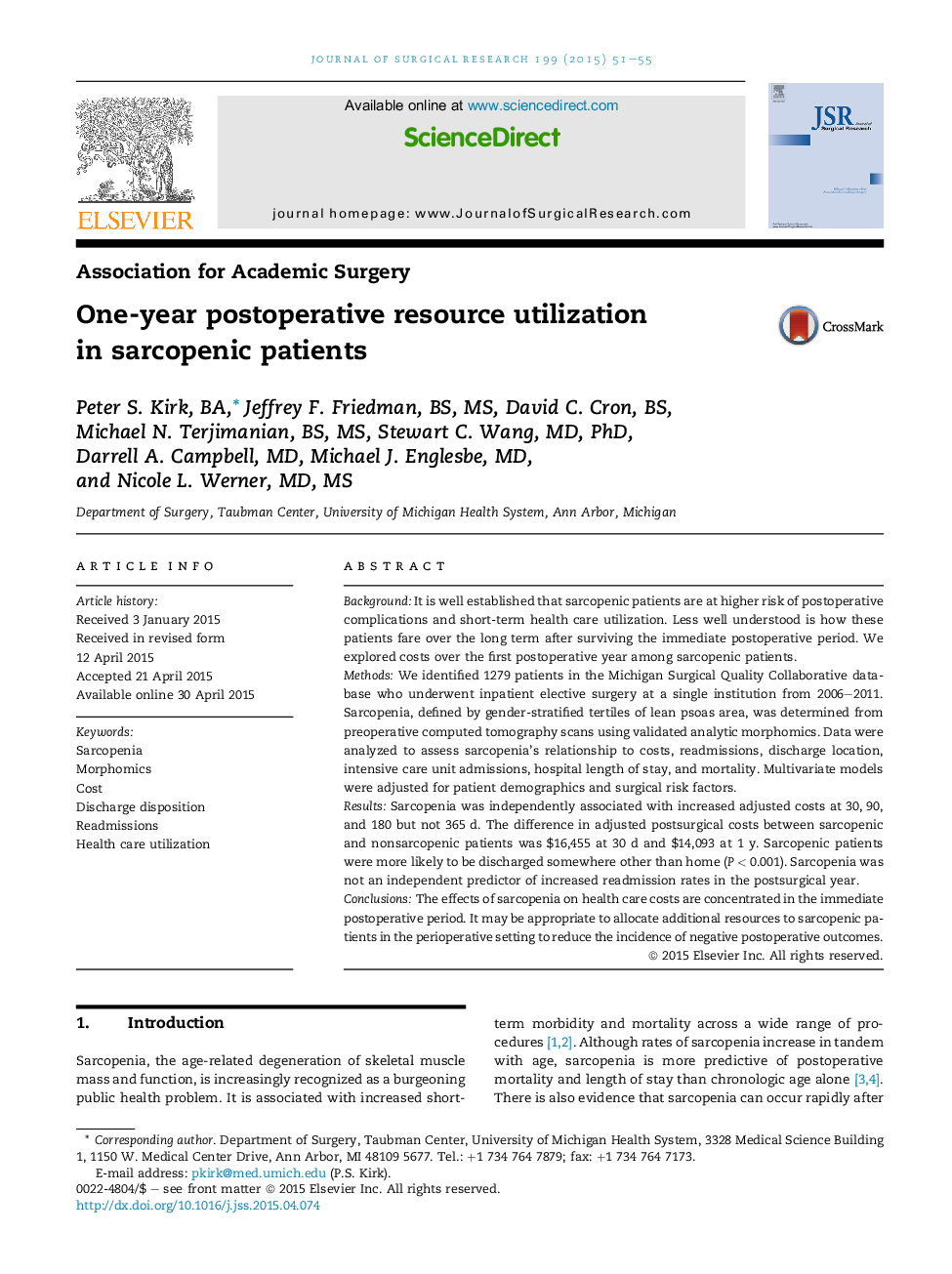| Article ID | Journal | Published Year | Pages | File Type |
|---|---|---|---|---|
| 4299592 | Journal of Surgical Research | 2015 | 5 Pages |
BackgroundIt is well established that sarcopenic patients are at higher risk of postoperative complications and short-term health care utilization. Less well understood is how these patients fare over the long term after surviving the immediate postoperative period. We explored costs over the first postoperative year among sarcopenic patients.MethodsWe identified 1279 patients in the Michigan Surgical Quality Collaborative database who underwent inpatient elective surgery at a single institution from 2006–2011. Sarcopenia, defined by gender-stratified tertiles of lean psoas area, was determined from preoperative computed tomography scans using validated analytic morphomics. Data were analyzed to assess sarcopenia's relationship to costs, readmissions, discharge location, intensive care unit admissions, hospital length of stay, and mortality. Multivariate models were adjusted for patient demographics and surgical risk factors.ResultsSarcopenia was independently associated with increased adjusted costs at 30, 90, and 180 but not 365 d. The difference in adjusted postsurgical costs between sarcopenic and nonsarcopenic patients was $16,455 at 30 d and $14,093 at 1 y. Sarcopenic patients were more likely to be discharged somewhere other than home (P < 0.001). Sarcopenia was not an independent predictor of increased readmission rates in the postsurgical year.ConclusionsThe effects of sarcopenia on health care costs are concentrated in the immediate postoperative period. It may be appropriate to allocate additional resources to sarcopenic patients in the perioperative setting to reduce the incidence of negative postoperative outcomes.
